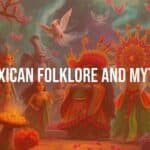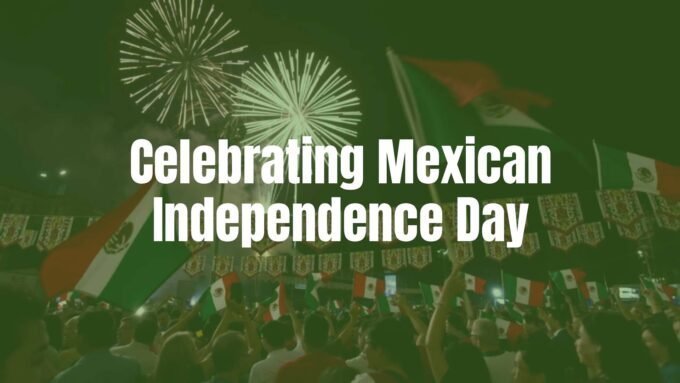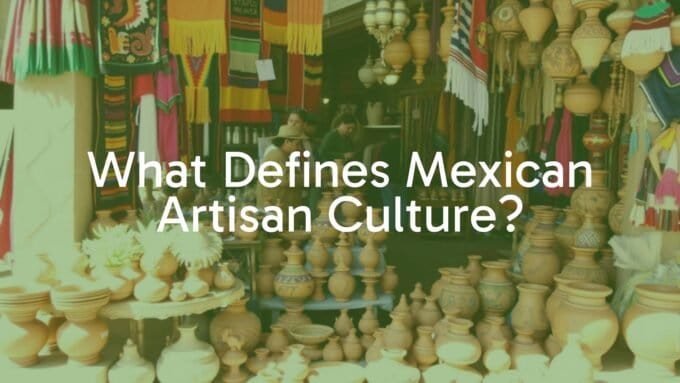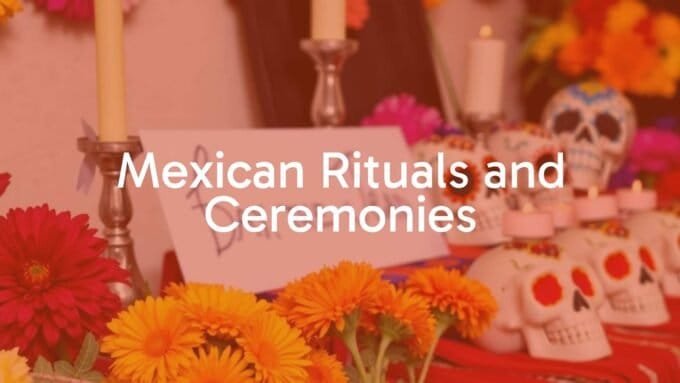Mexican murals and public art are more than colorful wall paintings-they tell the story of a country and its people. These big, lively artworks began after the Mexican Revolution and became a way to share ideas, teach citizens, and build a sense of national identity in a country once divided by conflict. Many murals are painted on government buildings and are meant for everyone to see-not just those who can read or visit museums. Mexican muralism combines art with social purpose and became one of the biggest art movements of the 20th century, still having influence around the world today.

What Makes Mexican Murals and Public Art Special?
Mexican muralism is a public art movement shaped by Mexico’s social and political struggles. It focuses on making art open to everyone and uses murals to teach and bring people together. Unlike art locked away in museums or private collections, murals in public spaces are for all to see, no matter their background or education. Making art public and easy to understand sets this movement apart from many others.
In 1921, artist David Alfaro Siqueiros wrote a manifesto stating that art should have a social and political purpose. Murals were often created to promote the ideals of the Revolution, celebrate the blending of Mexico’s native and European cultures, and support indigenous rights, all while criticizing injustice. Combining bold messages and visuals, Mexican muralism found its unique and lasting path.
Main Features of Mexican Muralism
Mexican muralism stands out for its size-murals often cover entire walls or ceilings of public buildings. Their subjects are usually big, story-based, and full of meaning, showing historic moments, revolutionary leaders, daily life, and especially the lives of workers and indigenous people. There is a focus on Mexico’s identity, roots, and calls for social fairness. The artists often used elements from Mexican folk art as well as styles like Cubism and Expressionism, blending different influences into something fully Mexican.
Many muralists brought back old methods like painting on wet plaster (fresco), which made the art last longer. They also tried new materials and team-based ways of working. Many murals were group efforts, reflecting their public and community-focused nature.
| Feature | Description |
|---|---|
| Scale | Large murals on public buildings, often covering entire walls |
| Theme | National identity, social justice, indigenous heritage |
| Technique | Fresco painting, use of modern materials, teamwork |
| Audience | Everyone, including those who cannot read or enter museums |
| Purpose | Teaching, uniting, and representing the people of Mexico |
How Murals Differ from Other Public Art
While all public art is open to everyone, Mexican murals stand out for their strong messages about politics and society. Unlike statues or decorations, these murals were created to teach people about history and to push for unity. They were not just art placed in public; they interacted with the issues of the time and often sparked discussions.
Their size and durability, achieved with methods like fresco on important buildings, make them different from temporary street art or small sculptures. Their focus on storytelling and real-world problems means they do more than just decorate-they explain and challenge.
History and Background
The roots of Mexican muralism are tied closely to the Mexican Revolution (1910-1920), a violent period involving many groups and leaders such as Francisco Madero, Pancho Villa, and Emiliano Zapata. When the fighting ended, the new government needed to bring the country together and create a shared story of what it meant to be Mexican.

At a time when many people could not read, leaders thought art should help unite the population by showing them their shared past and future. Large murals on public buildings became the perfect way to deliver these messages. At the same time, artists wanted to break away from European styles and create something truly Mexican, proudly drawing from their own history and traditions.
The Start of the Mural Movement
The mural movement officially got its start in the early 1920s through the efforts of José Vasconcelos, Secretary of Public Education. He believed public art could help build national pride, and brought together artists-many fresh from studying in Europe-to create murals on government buildings.
The first big government-sponsored murals appeared in the Colegio San Ildefonso. Early pieces, such as Diego Rivera’s “Creation” (1922) and José Clemente Orozco’s “Maternity” (1923), began this massive project. Even though these first works still looked a bit European, they started to focus more on native Mexicans and set the direction for later murals.
Why Were the Murals Painted?
The goals of the mural movement were tied to politics, society, and culture. The government wanted to show its power, celebrate the Revolution, and talk about land and social reforms on walls everyone could see.
- Political: Support the government and revolutionary ideals.
- Social: Bring people together by highlighting native roots and the working class.
- Cultural: Build a truly Mexican identity that honored both indigenous and mixed-race (mestizo) backgrounds, and move away from European ideas.
Main Subjects and Messages in Mexican Murals
Murals in Mexico tackled important subjects. They were meant to create pride, knowledge, and a sense of responsibility. The artists were serious about their message, using big images to share sometimes difficult ideas in a way anyone could understand.
The murals often talked about Mexico’s many cultures, hard times for workers, differences between rich and poor, and ongoing fights for better lives. They were made to make people think and remember their history together as one country.
National Pride and Indigenous Roots
One main idea in Mexican murals is celebrating national identity connected to the country’s native heritage. After centuries of foreign rule, the murals helped redefine what it meant to be Mexican by showing ancient civilizations and their cultures as something to be proud of.
The idea of mestizaje-being both indigenous and European-showed up often. Diego Rivera’s work in the Palacio Nacional, for example, starts with the founding of Tenochtitlan (the old Aztec city) to show how current Mexico connects to its earliest roots.
Revolution and Social Struggle
Because the movement started after the Revolution, stories about fighting for justice and leaders like Emiliano Zapata were everywhere. Some artists, like José Clemente Orozco, showed war’s real pain and suffering rather than just the success.
The murals often showed hard times for workers and farmers, making a strong case for fair treatment and social change. This was especially powerful in the early years, since many artists were communists and wanted to call out injustice in vivid, public ways.

Political and Social Criticism
The murals were politically charged. They addressed problems in Mexico and beyond, blaming corrupt officials or unfair systems, and sometimes protesting fascism or imperialism.
David Alfaro Siqueiros, for example, created on-the-nose attacks on capitalism and dictatorship. Even as political times changed in Mexico, the murals kept pushing for attention to fairness and equal rights, reflecting the importance of art in public life.
How Mexican Murals Were Made
The muralists not only broke new ground in the subjects they chose, but also in the way they created art. They often borrowed from old techniques but did not shy away from embracing modern technology and teamwork.
Very often, the work connected closely with the neighborhood-sometimes even involving local people in the painting process, making murals something alive that belonged to the local population, not just to the artist.
Techniques: Fresco, Encaustic, and More
The most popular method was fresco-putting paint onto wet plaster so that the color becomes part of the wall. Diego Rivera was famous for using this technique, especially in projects like the “History of Mexico” murals. This method made murals strong and long-lasting.
But artists like Siqueiros experimented with new industrial paints and tools. He used spray guns and airbrushes, materials like car lacquer, and even used projectors to help place images on large surfaces. He would pour, drip, or splatter paint, creating effects that looked ahead to the methods of some American artists like Jackson Pollock.

Teamwork and Involving the Community
While the most famous muralists are often remembered as individuals, these projects were often a group effort, reflecting the community-focused message. Artists worked together with assistants and sometimes included local residents in planning or painting, making the murals a shared creation.
An example is Siqueiros’s “Portrait of the Bourgeoisie,” which he made with other artists. Today, many mural projects still involve community members, keeping alive the spirit of shared art for the benefit of everyone.
Important Mexican Muralists and Their Work
Many people worked on Mexican murals, but a few artists are especially important-the so-called “three great ones,” or “los tres grandes.” Their work helped shape not just Mexican but world art. In addition, some important women artists contributed too, even if they didn’t always get as much attention at the time.
Los Tres Grandes: Rivera, Orozco, Siqueiros
- Diego Rivera (1886-1957): Rivera used both Mexican and European styles and told stories with bright colors and lots of detail. His murals often show Mexico’s history and working people in heroic ways, as in his “History of Mexico” mural. His style was idealistic and hopeful.
- José Clemente Orozco (1883-1949): Orozco’s work was more serious and critical. He showed the pain of war and was suspicious of power. His paintings are known for their strong lines and deep, rich colors, as seen in murals like “The Trench.”
- David Alfaro Siqueiros (1896-1974): Siqueiros was younger and the most experimental. Deeply political, he used new materials and dynamic techniques to make his murals busy and bold. He wanted viewers to be surrounded by the story. “Portrait of the Bourgeoisie” is a good example of his energetic, protest-focused art.
Other Notable Artists
Many others added their voices to the movement. Rufino Tamayo created abstract works with a focus on pre-Columbian themes. Artists like Fernando Leal, Jean Charlot, Carlos Merida, Roberto Montenegro, Dr. Atl, Pablo O’Higgins, and Antonio Pujol were also important in expanding and diversifying the movement.
Key Women Muralists
- Aurora Reyes Flores: The first recognized female Mexican muralist, Reyes Flores made works about social problems, women, and education, like her mural “Attack on Rural Teachers.”
- Elena Huerta Muzquiz: She painted Mexico’s largest mural by a woman in Saltillo, showing stories from Mexico’s independence and later history.
- Rina Lazo: Born in Guatemala but working in Mexico, she assisted Rivera but also developed her own murals with native and nationalist themes.
- Fanny Rabel: One of the first women in the Mexican muralism movement, she painted important works at the National Museum of Anthropology. Marion Greenwood created noteworthy murals in universities and markets in Mexico City.
Famous Murals and Their Importance
Mexican murals changed the way cities looked and felt, giving public buildings a new sense of purpose. They helped tell stories about history, revolution, and social change, making them key symbols of Mexican life.
Diego Rivera’s “Agrarian Leader Zapata” and More
Rivera’s “Agrarian Leader Zapata” (1931) is one of the most famous Mexican murals, showing Zapata as a leader for farmers’ rights. Other important works include “The History of Mexico” in Mexico City, which tells the story of Mexico from Aztec times to the Revolution.
Rivera also painted in the United States. His “Detroit Industry Murals” praise workers and machines, while his “Man at the Crossroads” at Rockefeller Center became famous when it was destroyed for showing communist themes. He later remade this mural as “Man, Controller of the Universe” in Mexico.
Major Works by Orozco and Siqueiros
Orozco’s “Dive Bomber and Tank” (1940), painted at MoMA in New York, strongly opposes war, showing the destruction caused by military machines. Siqueiros’s “Collective Suicide” (1936) uses abstract methods to tell the tragic story of Aztecs fighting the Spanish invaders. Another powerful Siqueiros mural, “Portrait of the Bourgeoisie,” attacks fascism and connects wealth and war, while “Echo of a Scream” (1937) gives a haunting view of suffering during war.
Other Key Public Artworks
Mexico is full of important murals outside of those done by the Big Three. Early works include Fernando Leal’s “Los Danzantes de Chalma” and Jean Charlot’s “The Conquest of Tenochtitlán.” Buildings like the Polyforum Siqueiros, covered entirely in Siqueiros’s murals, remain major art landmarks.
Growth and Influence of Mexican Public Art
Mexican muralism kept growing and changing even after its early peak. It inspired not only Mexican artists but also creators in other countries, showing how art can bring people together and talk about real problems. The movement has shaped both how art is made and what it stands for in society.
How Murals Affect Art and Daily Life
In Mexico, the tradition of murals packed with clear messages is still strong. Murals in public spaces continue to talk about identity, culture, and social issues, passing down the art’s educational role. New generations of artists keep this style alive and relevant.
- Murals are still being painted in schools, government buildings, and neighborhoods.
- They keep public art a part of everyday life and a way to talk about present-day issues.
- The tradition encourages other artists, in and outside Mexico, to use art for education and activism.
International Impact
Mexican muralism influenced art movements worldwide. After the artists spent time in the United States, programs like the WPA followed the Mexican public art model. The techniques and ideas of Rivera, Orozco, and Siqueiros shaped young artists like Jackson Pollock and inspired public art efforts in countries across Latin America and beyond.
| Country | Influenced By Mexican Muralism |
|---|---|
| United States | WPA murals, Chicano mural movement |
| Guatemala | Carlos Mérida’s murals |
| Ecuador | Oswaldo Guayasamín’s murals |
| Brazil | Candido Portinari’s works |
Modern Street Art and Muralism
Today, the spirit of Mexican muralism lives on in street art, where artists use walls to talk about fairness, identity, and protest. Chicano murals in the United States, and contemporary Mexican artists like Seher One and Paola Delfin, keep the tradition alive, updating it with modern materials and styles. The original message-that art should be public, useful, and about real life-continues to be important.
Global Reach
Mexican muralism has encouraged artists everywhere to use public art for more than just decoration; it’s a way to communicate, protest, and build identity. Countries experiencing social change or seeking national symbols often turn to murals with big, clear messages, much like Mexico did after its Revolution.
Questions and Answers about Mexican Murals and Public Art
People often ask how these big murals are cared for, if new ones are still made, and what role they play today. Because murals are part of the public space, they face special challenges and rewards that other kinds of art do not.
How Are Murals Kept in Good Shape?
Taking care of murals-especially those outside or at risk from politics or weather-can be hard. Fresco painting helps murals last, but they still suffer from pollution and time. Experts use special cleaning and repair methods to bring old murals back and make sure the artists’ ideas are not lost. Sometimes murals are damaged or even destroyed for political reasons, as with Rivera’s “Man at the Crossroads.” In those cases, artists might recreate the work, or modern foundations step in to save and show them, as was done with Siqueiros’s “América Tropical” in Los Angeles.
Can People Still Commission Murals?
Yes! Murals are still being made for public and private spaces. Governments, local groups, businesses, and artists keep the tradition going, using murals to improve neighborhoods, celebrate history, and shine a light on social issues. Many programs help connect artists and communities, and some even use mural commissions to teach students about art. Murals continue to bring people together, brighten streets, and make art part of daily life everywhere.













Leave a comment